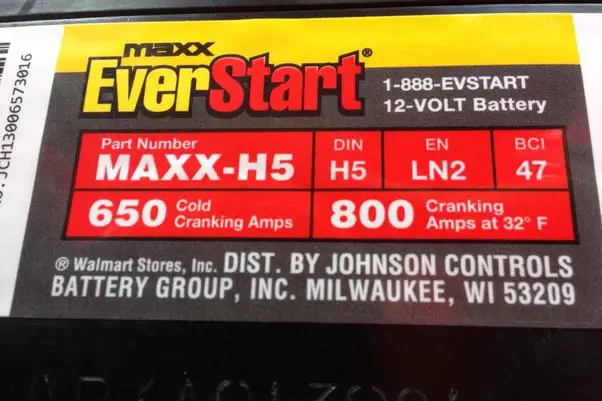This is an issue that you need to pay attention to as it’s a crucial part of your vehicle. It can be a challenge for some people who don’t have much knowledge about the types of batteries and car electrical systems. Follow up! We’ll give you a brief understanding of the measurement.
What Is Reserve Capacity On A Battery?
Reverse capacity (RC) indicates how long a fully charged battery provides enough power to run essential parts when the car alternator fails.
The measurement is one of the specifications of a 12-volt battery. It shows the amount of time (minutes) that a fully-charged battery can deliver 25 amps of power at 80°F before falling below 10.5 volts or 1.75 volts per cell.
You can also often hear people talk about the C20 battery capacity. It’s stored energy that can be delivered continuously for 20 hours at 80°F and remains above 10.5 volts.
Why Is RC Important?
Knowing about the reserve capacity battery issue is necessary since the component plays an important role in your car’s operation.
Normally, the alternator is in charge of providing constant current flow to the volt charger, lights, windshield wipers, alarm systems, and other parts. If something is wrong with the alternator, the engine starts taking battery power.
The original battery supplies electricity to the system. Some cars even have dual batteries. Therefore, knowing the RC meaning helps you determine its sustainability; thus, you will not drive over its limit and can use the part for a longer period of time.
Moreover, the information supports you in choosing the most suitable component for your car. High rating ones with long battery cycle life are recommended to avoid further issues.
RC Rating Vs CCA Meaning On A Battery
RC, mainly seen on deep cycle batteries, means reserve capacity. The measurement is done in minutes at the most favorable conditions of 80°F.
Meanwhile, CCA, standing for “Cold Cranking Amps“, is measured in amps. Cold-cranking ampere implies how many amps of electrical current the voltage supplier can discharge for more than 30 seconds at 0°F and maintain itself at 7.2 volts.
It’s assumed that drivers in warm climates choose a power deliverer based on RC, and those in colder areas focus on the cold cranking amperage.
The Difference Between Reserve Capacity Rating And Amp Hour Rating

These two measurements indicate different things. Reverse capacity is counted by minutes, whereas an amp hour is the number of amps of current supplied during one hour (amps per hour).
There’s a conversion showing the relationship between these two measurements. If you know one, you can calculate the other.
You can divide the amp hours by 25, then take that number and multiply by 60; you’ll have the RC. Reverse the formula to find the amp rating. Divide the RC by 60, and multiply the result by 25 to find out the amp loads.
How To Measure RC?
To calculate, first, you need to fully charge your power and remove the surface charge. Then, put a timer and let it deliver the power of a 25-ampere load at 80°F. When it reaches 10.5volts, stop the timer. The minutes you see are the RC measurements.
Besides, there’s equipment called the Cadex CA-12 which can measure different specifications such as state of charging, RC and CCA. It’s said that thicker plates can increase the RC rating as well.
Bottom Lines
The more you understand your vehicle, the more you know how to use it beneficially with long battery life and minimum damage. Knowing the meaning of a reserve capacity on a battery will give you a big help to avoid the future issues of battery failure or damaged batteries.









0 Comments